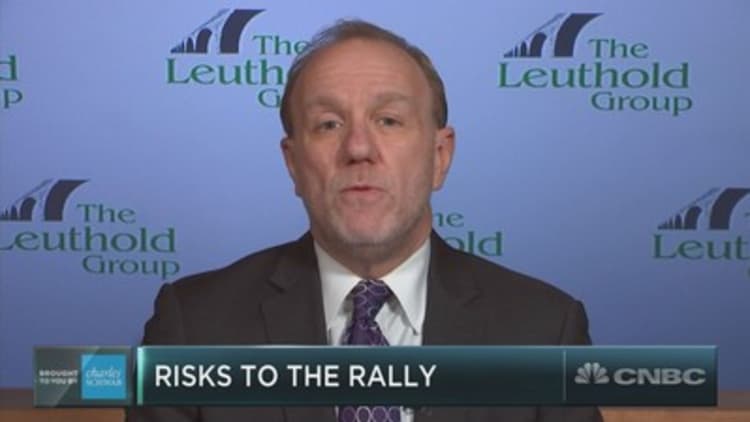
Significant wage increases may be on the way now that one measure of economic growth has caught up with the unemployment rate.
In fact, worker earnings could rise by as much as 4 percent in 2018 after years of lackluster gains, according to a trend spotted by Jim Paulsen, chief investment strategist at Leuthold Group.
Analyzing employment and wage trends over the past half-century showed that the unemployment rate, earnings and nominal GDP, or growth adjusted for inflation, are closely linked. In short, when nominal GDP is higher than the jobless rate, wages usually rise appreciably. In the opposite instance, which has been the case for most the current recovery, wage gains are harder to come by.
The equation could solve the most vexing issue for policymakers ever since the economy escaped the throes of the financial crisis-induced recession in mid-2009.
"Wage pressures have always responded to the unemployment rate but only in relation to the pace of overall economic growth," Paulsen wrote in a note to clients. "This simply was not an issue until this recovery, because economic growth was always strong enough to create wage inflation once the unemployment rate got low.
"In the current recovery, though, the unprecedented sluggish pace of nominal GDP growth has allowed the unemployment rate to fall much lower than ever before without aggravating cost-push pressures."
In turn, that has kept the pace of average hourly earnings muted — around 2.5 percent or lower for most of the recovery period. Nominal GDP generally only trails unemployment during recessions.
But now with the inflation-adjusted GDP level at 4.4 percent and the unemployment rate at 4.1 percent, a breakout could be on tap. Paulsen surmised that a "spurt near 4 percent" is possible.
"For the first time in this recovery," the GDP-unemployment relationship "has turned positive and history suggests wage pressures are finally likely to intensify more than most anticipate this year," Paulsen said. "The unemployment rate is low, and equally important, nominal GDP growth is finally strengthening. This combination may soon revive inflationary worries."
Indeed, bond yields have been on the move since September, with the benchmark 10-year Treasury note now around 2.70 percent, its highest since April 2014. Similarly, the five-year break-even rate, or the difference between the nominal bond and its inflation-pegged counterpart, was trading Monday around 1.91 percent, its highest since March 2017.
Paulsen references "worries" because he thinks that the rise in wages could boost inflation expectations, driving up bond yields and "perhaps bringing a correction to the stock market." If the market doesn't fear the inflation threat, he said the "recent melt-up in the stock market will continue."
WATCH: Paulsen talks inflation and rising bond yields.



